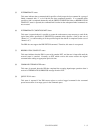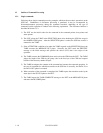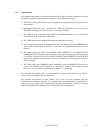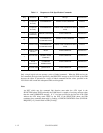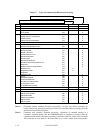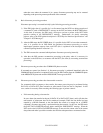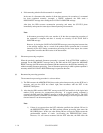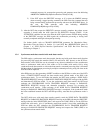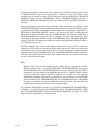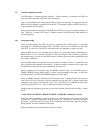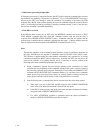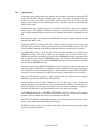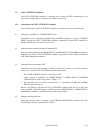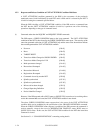C141-E124-01EN 1 - 17
command necessary for reconnection processing and generates sense data indicating
ABORTED COMMAND[=B]/Select /Reselect failure[=45-00].
2) If the INIT rejects the IDENTIFY message, or if it rejects the SIMPLE message
when executing a tagged queuing command, the IDD clears the command that was
being executed during reconnection processing and enters the BUS FREE phase. In
this case, the IDD generates sense data indicating ABORTED
COMMAND[=B]/Message error[=43-00].
3) After the INIT that accepts the IDENTIFY message normally completes the pointer restore
operation, it should make the ACK signal for the IDENTIFY message FALSE. If the
ATTENTION condition does not exist when the ACK signal becomes FALSE during sending
of the IDENTIFY message, the IDD regards the reconnection processing as having been
normally completed and begins subsequent processing.
For further details, refer to CHANGE DEFINITION parameter list (Reselection Retry,
Reselection Time-out Delay) in Section 3.1.4 and SCSI Bus (RESELECTION phase) in
Chapter 1 of “SCSI Physical Interface Specifications” and SCSI Bus Error Recovery
Processing in Chapter 3.
1.3.4 Synchronous mode data transfer/wide mode data transfer
The IDD equips a synchronous mode data transfer function and wide mode data transfer function
for processing high speed data transfers (DATA IN and DATA OUT phases) on the SCSI bus.
Data transfers on the SCSI bus can be executed in any desired combination of the asynchronous
mode or synchronous mode and in 8 bit widths or 16 bit widths (wide mode), but by using
synchronous mode data transfer or wide mode data transfer, command processing time is shortened
and throughput for input/output processing by multiple command processing using idle time on the
SCSI bus can be improved.
After IDD power on, after generating a RESET condition on the SCSI bus or after one of the INITs
issues a TARGET RESET message, the data transfer mode (default mode) of the IDD is the
asynchronous mode. To use wide mode data transfer, the INIT must exchange a WIDE DATA
TRANSFER REQUEST message or PARALLEL PROTOCOL REQUEST message with the IDD,
and determine the SCSI bus width. To use the synchronous mode data transfer, the INIT must
exchange the SYNCHRONOUS DATA TRANSFER REQUEST message or PARALLEL
PROTOCOL REQUEST message and determine parameters necessary for executing the
synchronous mode transfer. When exchange of the WIDE DATA TRANSFER REQUEST
message or PARALLEL PROTOCOL REQUEST message is completed, if the synchronous mode
has been established between the INIT and IDD previously, note that the asynchronous mode is
set.
The INIT which uses wide mode data transfer normally sends the WIDE DATA TRANSFER
REQUEST or PARALLEL PROTOCOL REQUEST message to the IDD following the IDENTIFY
message after the initial SELECTION phase, and requests the TARG (IDD) to set the SCSI bus
width in the wide mode. Also, if synchronous mode data transfer is used, after establishing the
SCSI bus width, the INIT exchanges the SYNCHRONOUS DATA TRANSFER REQUEST
message or PARALLEL PROTOCOL REQUEST message and requests the TARG (IDD) to set
the synchronous data transfer mode.



